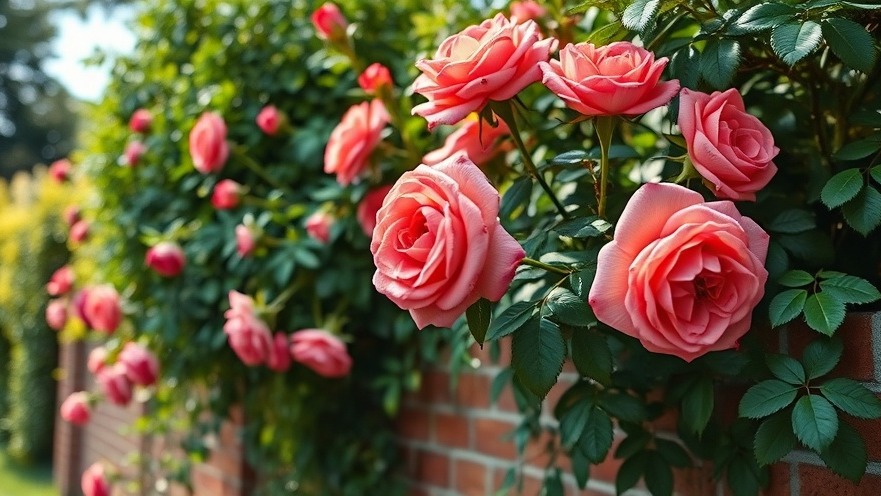
Why Choose Climbing Roses for Your Eco-Friendly Garden?
Climbing roses, with their beauty and fragrant blooms, offer a wonderful addition to any garden, particularly for eco-conscious homeowners looking for natural landscaping solutions. These long-lived plants can be trained to grow vertically on walls or trellises, maximizing space and minimizing maintenance. With the right care, varieties like Rosa 'Pippin' and 'Parkdirektor Riggers' not only enhance the aesthetics of outdoor spaces but also contribute positively to local ecosystems.
Enhancing Biodiversity in Your Garden
One of the comforts of cultivating climbing roses is their capacity to attract beneficial wildlife. Roses with single or semi-double blooms, which expose the central parts of their flowers, are perfect for providing sustenance to essential pollinators like bees and butterflies. According to eco-friendly gardening practices, integrating these plants into your landscape is a simple yet effective step toward promoting biodiversity and supporting local wildlife.
Future Trends in Sustainable Gardening
The gardening community is increasingly shifting toward sustainable practices. This includes selecting plants that require less water, are resilient to pests, and can flourish in various climate conditions without extensive chemical treatments. As consumers become more mindful of their garden choices, climbing roses are gaining popularity not just for their beauty, but for their ecological benefits as well. This aligns with the broader movement toward zero-waste practices and sustainable home design.
Practical Steps for Growing Climbing Roses
If you are considering adding climbing roses to your garden, begin by selecting a variety that suits your local climate. Conduct soil tests to ensure your garden can support your chosen rose species, and remember to plant these beauties in a location where they can receive ample sunlight. Regular maintenance, including appropriate pruning strategies, will ensure that your roses thrive and produce bountiful blooms. Investing in bare-root roses in autumn can also save costs while allowing for robust growth during the growing season.
Climbing Roses and the Art of Composting
For those committed to eco-friendly gardening, composting is an excellent way to enhance the health of your climbing roses. Adding homemade compost, rich in organic matter, not only nourishes the plants but also improves soil structure and water retention. This natural amendment reduces the need for chemical fertilizers, leading to a toxin-free home upgrade that benefits both your garden and the environment.
Where to Buy and How to Select Climbing Roses
When looking to purchase climbing roses, consider sources that prioritize sustainable practices. Reputable nurseries such as David Austin Roses and Peter Beales specialize in varieties that resonate well with eco-conscious gardeners. Look for healthy specimens free of damage or pests, ensuring that your gardening efforts have a positive impact from the start.
Emotional and Aesthetic Benefits
Beyond their ecological advantages, climbing roses can transform your outdoor space into a sanctuary. Their delightful fragrances can enhance outdoor gatherings and meditation spots, creating a serene atmosphere. Imagine sipping tea on your patio surrounded by the enchanting aroma of blooming roses—a sensory experience that fosters relaxation and connection to nature.
Your Next Steps
As you embark on your journey toward sustainable gardening with climbing roses, consider the potential of integrating other eco-friendly practices like water conservation methods and energy-efficient landscaping designs. Together, these steps can lead to a thriving garden that reflects your commitment to the environment while enhancing the beauty and function of your home.
 Add Row
Add Row  Add
Add 




Write A Comment